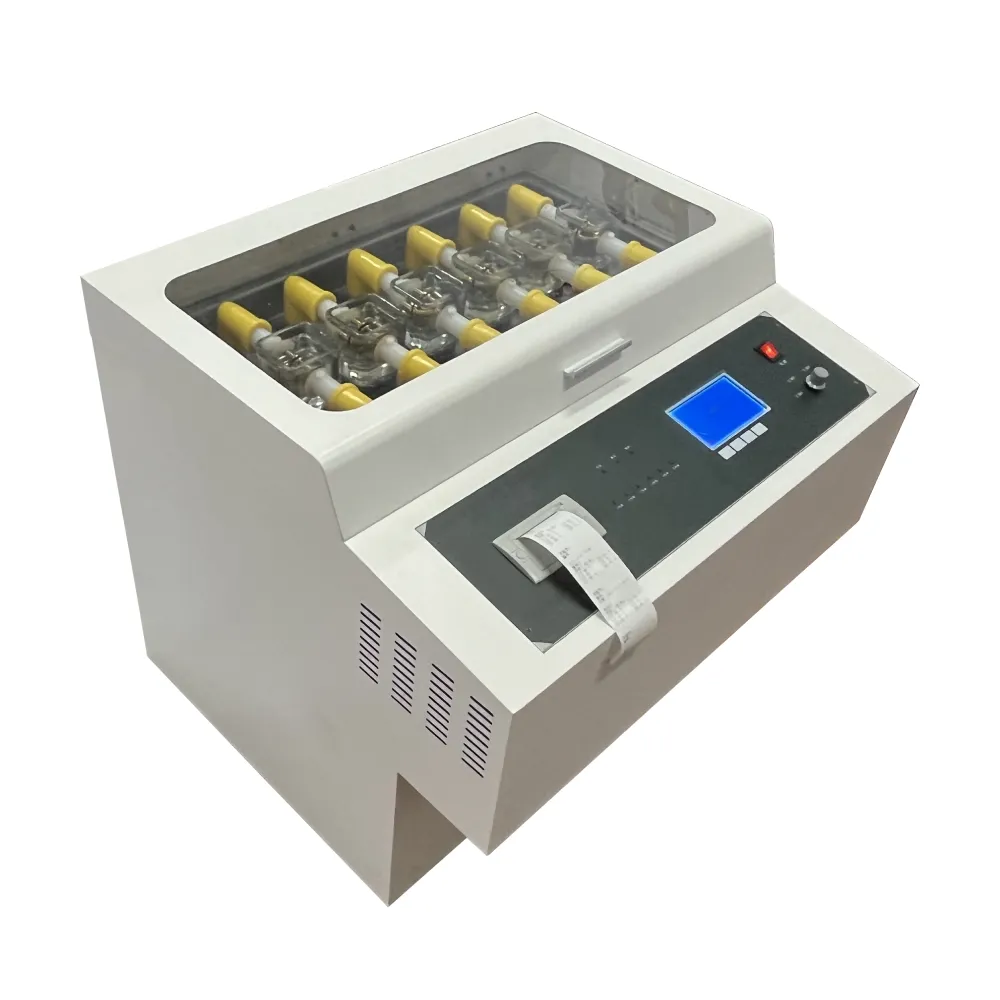 English
English


Evaluation of Transformer Oil Quality through Sludge Percentage Testing
Understanding the Sludge Test of Transformer Oil
Transformer oil is a critical insulating and cooling medium in electrical transformers. Over time, however, the oil can degrade, leading to the formation of sludge. The sludge can adversely affect the performance and reliability of transformers. This is where the sludge test of transformer oil becomes essential.
What is Sludge in Transformer Oil?
Sludge in transformer oil refers to the solid and semi-solid particles that form from the oxidation and thermal breakdown of the oil. These particles can include various compounds such as oxidized oil, metal oxides, and dust particles. Sludge can precipitate at the bottom of the transformer tank, reducing the insulation properties of the oil and potentially causing overheating, electrical failures, and transformer faults.
Importance of the Sludge Test
The sludge test is conducted to assess the health of transformer oil. By examining the amount and characteristics of sludge present, engineers can determine the oil's condition and make informed decisions about maintenance and oil replacement. Regular sludge testing helps organizations avoid unexpected downtime and costly repairs, thus enhancing the overall reliability and lifespan of transformers.
Procedure of the Sludge Test
The sludge test typically involves collecting a sample of the transformer oil and subjecting it to a series of evaluations
. Here’s a step-by-step breakdown of the process1. Sample Collection Oil samples are collected under controlled conditions to avoid contamination. It’s essential to follow safety regulations and standard operating procedures during collection.
sludge test of transformer oil

2. Laboratory Analysis The collected oil is sent to a laboratory where it is analyzed for various parameters including sludge volume, density, and composition. The laboratory team may use methods such as centrifugation or filtration to separate the sludge from the oil.
3. Quantification and Assessment The volume of sludge is quantified, usually expressed in milliliters per liter of oil. The composition and characteristics of the sludge are analyzed to determine the extent of degradation and the nature of contaminants.
4. Interpretation of Results Based on the test results, engineers assess the health of the transformer oil and whether it meets the necessary specifications for use. If excessive sludge is detected, it may indicate that the oil requires filtration, regeneration, or replacement.
Key Indicators of Sludge Formation
Several factors contribute to sludge formation in transformer oil, including
- Oxidation Exposure to heat and oxygen accelerates oil oxidation, leading to the breakdown and formation of sludge. - Moisture The presence of water in the oil can catalyze oxidation reactions, increasing sludge formation. - Contaminants Particulate matter, metal filings, and other contaminants can also contribute to sludge development.
Conclusion
The sludge test is a vital procedure in the maintenance of transformers that rely on oil for insulation and cooling. Regular testing not only helps in identifying the condition of transformer oil but also enhances the operational efficiency and reliability of transformer systems. By proactively managing sludge formation, utilities and businesses can extend the life of their transformers, ensure safe operations, and minimize unplanned outages. Investing in thorough and frequent sludge testing is a prudent strategy for sustainable transformer management.
-
Differences between open cup flash point tester and closed cup flash point testerNewsOct.31,2024
-
The Reliable Load Tap ChangerNewsOct.23,2024
-
The Essential Guide to Hipot TestersNewsOct.23,2024
-
The Digital Insulation TesterNewsOct.23,2024
-
The Best Earth Loop Impedance Tester for SaleNewsOct.23,2024
-
Tan Delta Tester--The Essential Tool for Electrical Insulation TestingNewsOct.23,2024





